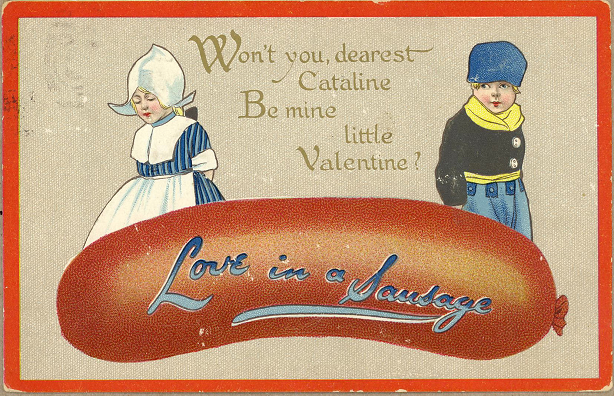
WPA Poster Template designed by Erik Hans Krause, 1935-1941.
Library of Congress Prints & Photographs Division, WPA Poster Collection
We don’t always have to go “driving for deco”, sometimes we can find it right in our backyard. The Memorial Art Gallery in Rochester, New York has several excellent examples of depression era art on permanent display.

Memorial Art Gallery
These paintings include, Reginald Marsh’s (1898-1954) People’s Follies, No. 3 (1938). Depicting the inside of a burlesque theatre, it’s typical of the urban life that Marsh was famous for painting.

People’s Follies, No. 3
This painting of the Bronx-Whitestone Bridge is a favorite of mine. Painted, circa 1939, by Ralston Crawford (1906-1978) is precisionist in style, celebrating industrialization and technology.

Whitestone Bridge, ca. 1939-1940
Irene Rice Pereira’s (1902-1971) was a major force in the in the development of American Modernism. In 1931 she travel to Europe and her painting The Pendulum (1937) was inspired by the machinery of the ocean liner’s engine room.

The Pendulum, 1937 Irene Rice Pereira
Landscape with Garage Lights, 1931-1932 is typical of the paintings of prototype pop artist Stuart Davis (1892-1964).

Landscape with Garage Lights, 1931-1932, Stuart Davis

The entrance to the Carl W. Peters exhibition at the Memorial Art Gallery.
For me the highlight of the visit to the Memorial Art Gallery was the special exhibit featuring the WPA mural work of Carl W. Peters (1897-1980) that ran from October 18th thru January 3rd. Carl W. Peters was a local Rochester, New York landscape painter who captured a changing Rochester in his paintings. Here are examples of two of his pre-WPA paintings.

Along the Genesee (1928). Peter captures the Genesee River gorge just north of downtown Rochester

Memorial Bridge (1930). Peters painting of the construction of the Veterans’ Memorial Bridge across the Genesee River.
What is amazing about Peters’ mural work is that so much of it is still intact. Only one of his murals no longer exists. Peters’ earliest and non-WPA mural, Rochester, Past, Present and Future, was at one end of the main banking room of the Genesee Valley Trust Company building.

Genesee Valley Trust Company Building (now the Times Square Building)

Rochester, Past, Present and Future (1930)

Main Banking Room Genesse Valley Building with the Peters’ mural at the far end.
Here are examples of Peter’s WPA Mural work displayed in the exhibit. (Note: only scale facsimiles of the murals were displayed.)

Contemplative Life & Active Life (1937)
This was the first WPA work of Peters. Originally the murals were on either side of the auditorium stage at Madison High School. Madison High was demolished in 1983, but the murals were saved and have since been restored and relocated to the Joseph C. Wilson Foundation.

The Early Days of the Erie Canal (1938)
Peters’ only horizontal mural was commissioned for the recently completed Fairport Library (now the Fairport Historical Museum of the Perinton Historical Society), itself a WPA project. The mural measures 41/2 feet high and 20 feet long. Some of Peters’ original preliminary sketches for this mural were on display.

Preliminary sketches for the “Erie Canal” mural.
Also featured at the Memorial Art Gallery, loaned from the Library of Congress, was the WPA-FAP Rochester poster work by Erik Hans Krause (1899-1990). Krause created posters on many topics, but here are some notable ones he did for special national health campaign and one generic WPA poster template.
-

-
Krause WPA-FAP Tuberculosis
-

-
Krause WPA-FAP Unfair to Babies poster.
-

-
Krause WPA-FAP Nurse the Baby poster
-

-
Krause WPA-FAP poster template
The WPA would come to an end in 1943 but Krause left it in 1941 after disagreements with staff and state WPA administrators. He would become the director of nature education for the Rochester, New York park system.
Even though the Carl W. Peters and Erik Hans Krause exhibits have closed, don’t miss a visit to the Memorial Art Gallery.
-

-
Chris enjoying the Carl W. Peters exhibit.
-

-
Anthony in front of Peters’ “Active Life” mural.
Chris & Anthony (The Freakin’, Tiquen Guys)
Like this:
Like Loading...
































